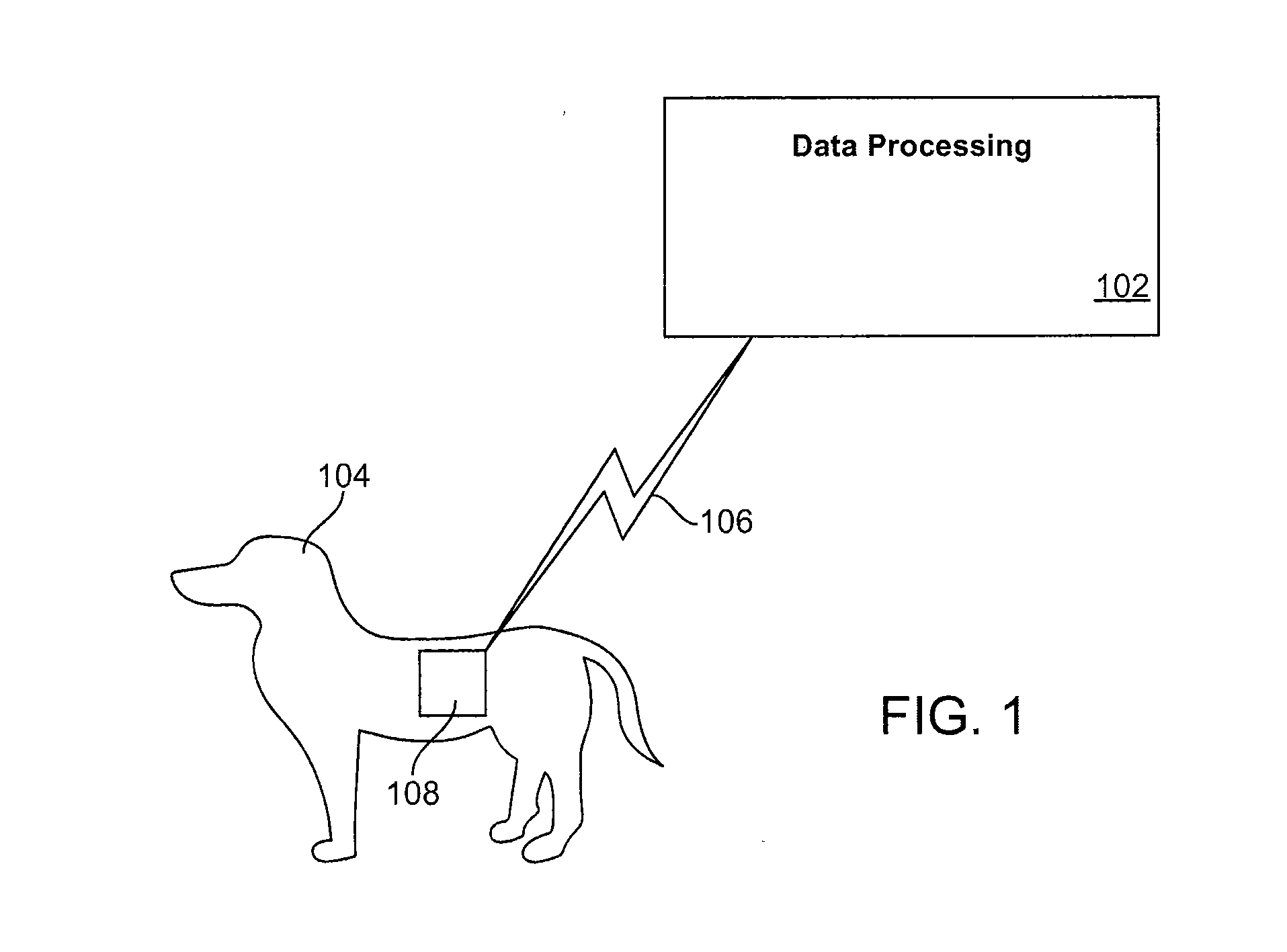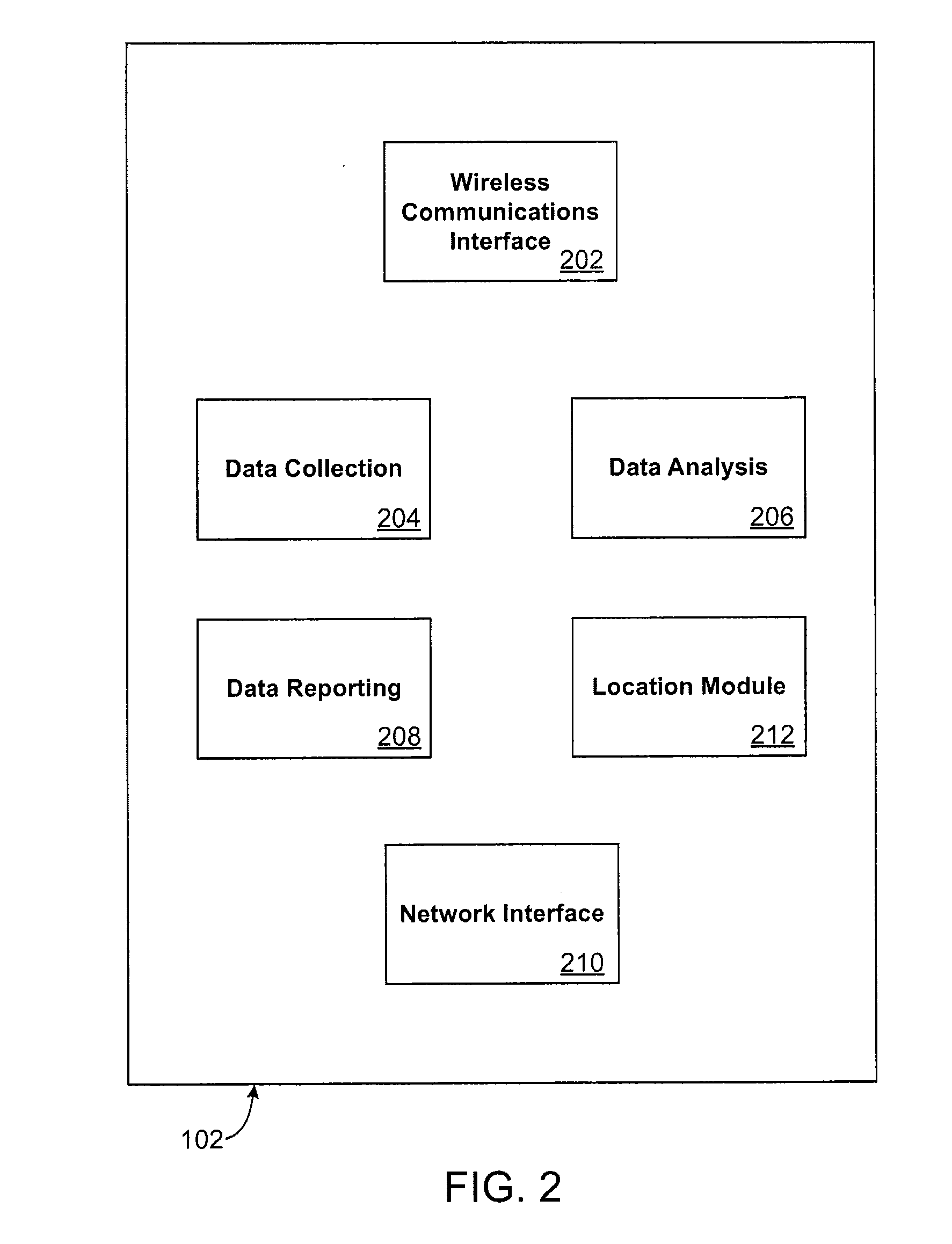Analysis of heart rate variability data in animals for health conditions assessment
a heart rate variability and data analysis technology, applied in the field of animal health care, can solve the problems of difficult job of veterinarian in determining animal health, unable to obtain useful results, and unable to achieve contradictory or inconsistent results, so as to enhance the convenience and usefulness of the system
- Summary
- Abstract
- Description
- Claims
- Application Information
AI Technical Summary
Benefits of technology
Problems solved by technology
Method used
Image
Examples
Embodiment Construction
[0042]FIG. 1 shows a heart rate variability processing system constructed in accordance with the present invention. A data processing apparatus 102 of the system receives heart rate information from an animal under study 104 over a non-invasive data link 106. The heart rate information may include heart rate data, heart beat data, interbeat interval (IBI) data, total power, low frequency (LF) components of IBI data, high frequency (HF) components of IBI data, and the like. The data processing apparatus 102 receives the heart rate and / or IBI data, generates heart rate variability data, performs data analysis on the heart rate variability data, and determines health condition of the animal under study. The animal 104 can comprise any variety of non-human animal, such as a dog, cat, horse, livestock, exotic, aquatic, marine animal, and the like, for which heart rate and / or IBI data can be collected. The data processing apparatus 102 can comprise a hand-held computing device that receiv...
PUM
 Login to View More
Login to View More Abstract
Description
Claims
Application Information
 Login to View More
Login to View More - R&D
- Intellectual Property
- Life Sciences
- Materials
- Tech Scout
- Unparalleled Data Quality
- Higher Quality Content
- 60% Fewer Hallucinations
Browse by: Latest US Patents, China's latest patents, Technical Efficacy Thesaurus, Application Domain, Technology Topic, Popular Technical Reports.
© 2025 PatSnap. All rights reserved.Legal|Privacy policy|Modern Slavery Act Transparency Statement|Sitemap|About US| Contact US: help@patsnap.com



